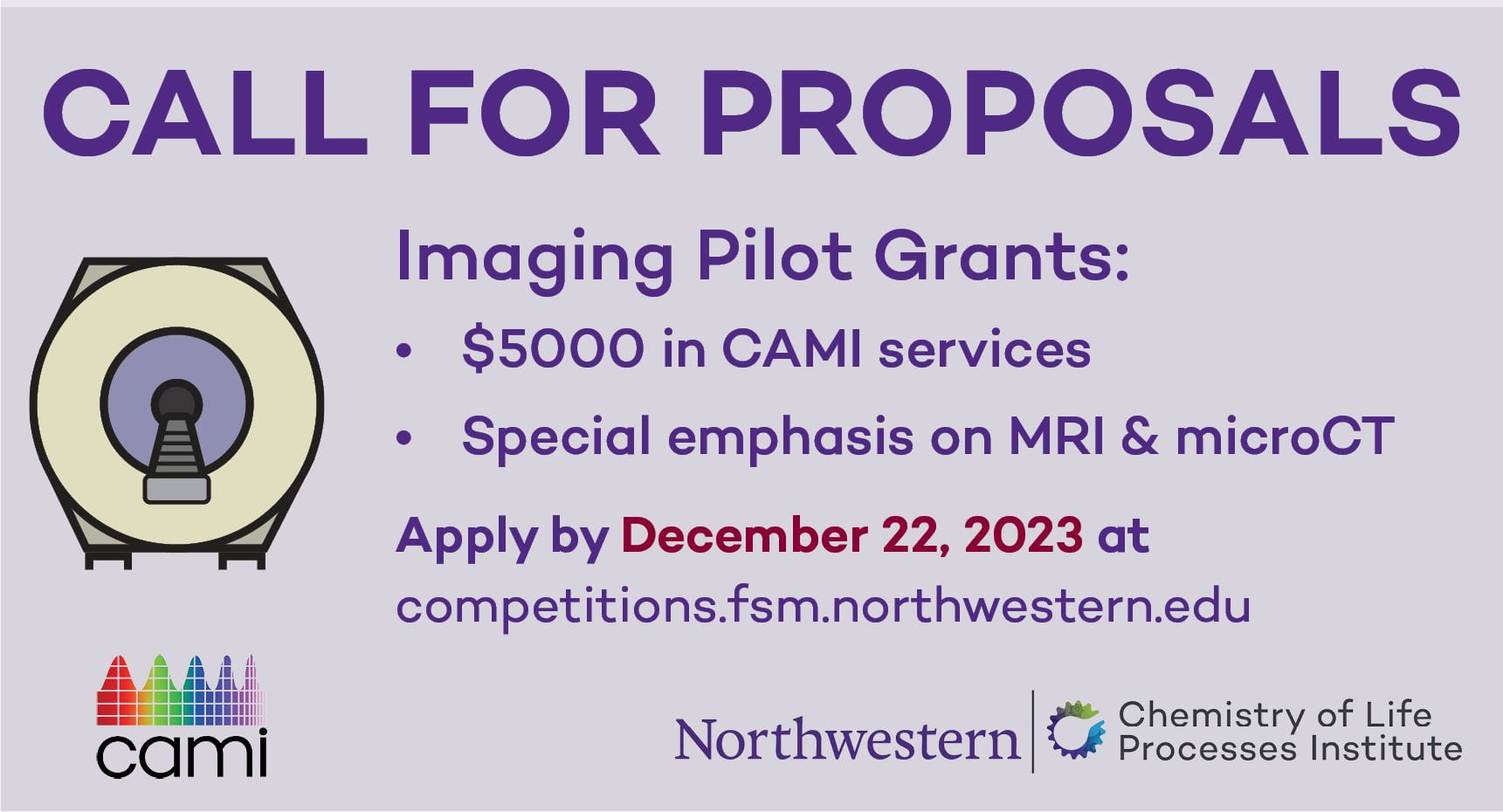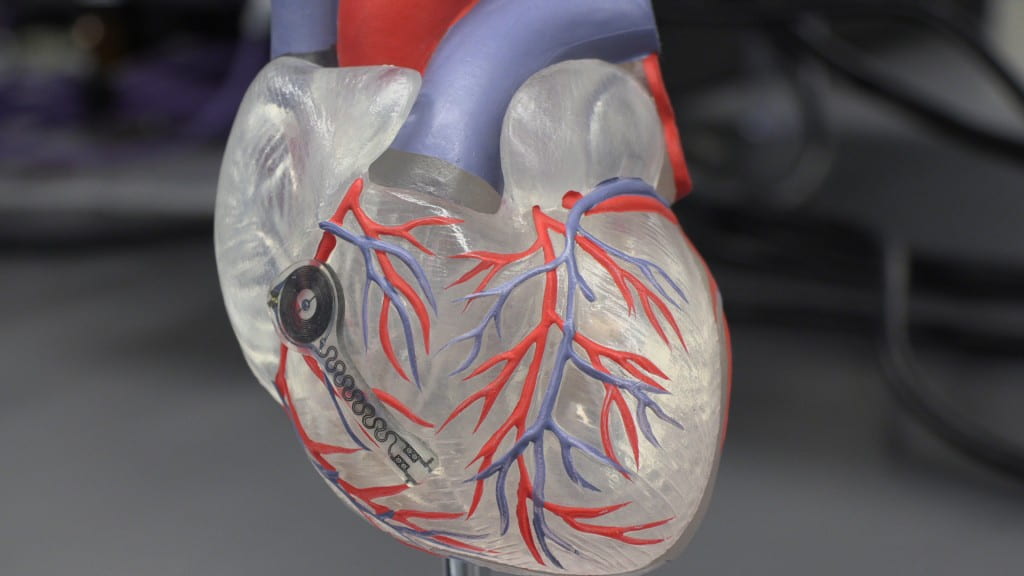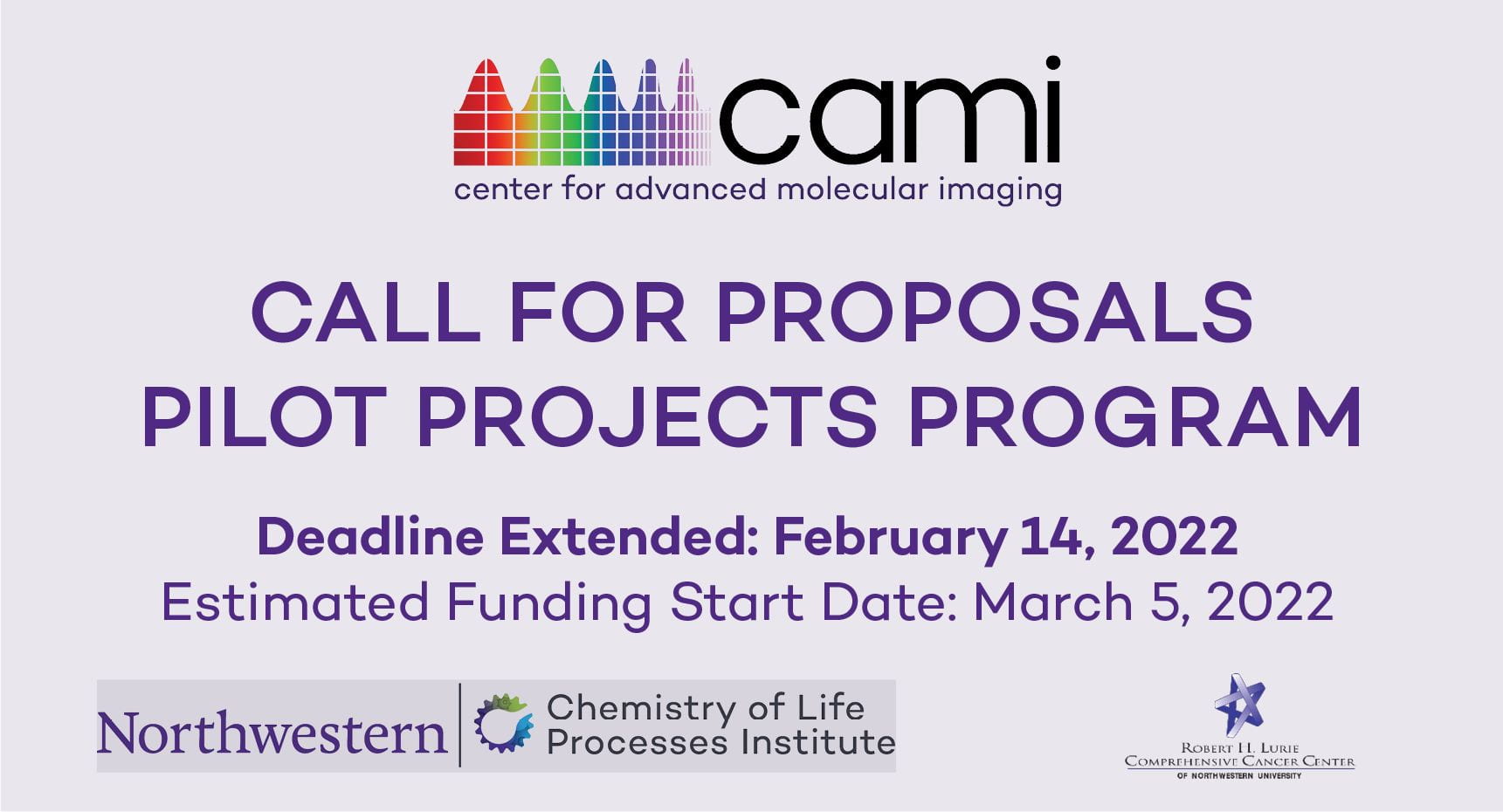
Pilot funding opportunity




Through the generous support of the H Foundation, Lurie Cancer Center (LCC) Members can apply for up to $10,000 to utilize any of the LCC supported Cores to drive research forward. Applicants must be using the chosen core for the first time or must not have used the core within the last year. The purpose of this RFA is to increase core usage by LCC members. Projects initiated with these awards should provide preliminary results for grant applications to external funding agencies for more long-term projects, such as NIH R21, R01 or larger grants. Application details are below.
Detailed information on CAMI equipment is available at https://cami.northwestern.edu/imaging-techniques/.
Applications will be submitted through the portal at https://competitions.fsm.northwestern.edu/grants/Cores. For questions and further information, please contact Jodi Johnson, PhD, Basic Research Program Coordinator at the Lurie Cancer Center, at jodi-johnson@northwestern.edu.
The deadline for applications is December 7, 2022.
Before preparing an application, discuss project suitability and feasibility with facility staff by contacting the applicable core facilities, and make a statement in the application including the date of the consultation and name of the person with whom you spoke.
Proposals should be written in typeface no smaller than Arial 11 point, with 1-inch margins and should include the following sections:
DO NOT SUBMIT A BUDGET.
Applications will be evaluated based on:

CAMI collaborator Prof. John Rogers’ work on a transiently activated, bioresorbable pacemaker was recently published in the journal Science. Read the highlights in Northwestern Now.
Viola KL, Bicca MA, Bebenek AM, Kranz DL, Nandwana V, Waters EA, Haney CR, Lee M, Gupta A, Brahmbhatt Z, Huang W, Chang T-T, Peck A, Valdez C, Dravid VP, Klein WL. The Therapeutic and Diagnostic Potential of Amyloid β Oligomers Selective Antibodies to Treat Alzheimer’s Disease. Frontiers in Neuroscience. 2022;15(1798). doi: 10.3389/fnins.2021.768646. PMID: 35046767

Northwestern University’s Center for Advanced Molecular Imaging (CAMI) is offering pilot project funding for up to 10 projects/year for each of the next two years to researchers with nascent imaging projects that will benefit from CAMI expertise in preclinical imaging method development and refinement. Detailed information on CAMI equipment is available at https://cami.northwestern.edu/imaging-techniques/.
Selected projects will be funded for up to $5,000 for one year (in very special circumstances, up to $7,500) of direct costs for imaging studies performed in CAMI. Funds are designated for CAMI services and may not be used to purchase drugs, animals, or supplies. Budgets must allocate funding for method development and data analysis.
Applications will be submitted through the NUCATS Competitions platform, at https://competitions.fsm.northwestern.edu/grants/cami_pilot2022.
Full details of the RFP are available here (pdf link): CAMI Pilot Projects RFP 2022
Yang Q, Wei T, Yin RT, Wu M, Xu Y, Koo J, Choi YS, Xie Z, Chen SW, Kandela I, Yao S, Deng Y, Avila R, Liu TL, Bai W, Yang Y, Han M, Zhang Q, Haney CR, Benjamin Lee K, Aras K, Wang T, Seo MH, Luan H, Lee SM, Brikha A, Ghoreishi-Haack N, Tran L, Stepien I, Aird F, Waters EA, Yu X, Banks A, Trachiotis GD, Torkelson JM, Huang Y, Kozorovitskiy Y, Efimov IR, Rogers JA. Photocurable bioresorbable adhesives as functional interfaces between flexible bioelectronic devices and soft biological tissues. Nature materials. 2021. Epub 2021/07/31. doi: 10.1038/s41563-021-01051-x. PubMed PMID: 34326506.
Liu P, Johnson SE, Xie X, Gao L, Haney CR, Zhao M, Jin J. Targeted design of a recombinant tracer for SPECT renal imaging. Theranostics. 2021;11(18):9118-32. Epub 20210827. doi: 10.7150/thno.60132. PubMed PMID: 34522230; PMCID: PMC8419037.
Choi YS, Yin RT, Pfenniger A, Koo J, Avila R, Benjamin Lee K, Chen SW, Lee G, Li G, Qiao Y, Murillo-Berlioz A, Kiss A, Han S, Lee SM, Li C, Xie Z, Chen YY, Burrell A, Geist B, Jeong H, Kim J, Yoon HJ, Banks A, Kang SK, Zhang ZJ, Haney CR, Sahakian AV, Johnson D, Efimova T, Huang Y, Trachiotis GD, Knight BP, Arora RK, Efimov IR, Rogers JA. Fully implantable and bioresorbable cardiac pacemakers without leads or batteries. Nat Biotechnol. 2021;39(10):1228-38. Epub 20210628. doi: 10.1038/s41587-021-00948-x. PubMed PMID: 34183859.
Ausra J, Wu M, Zhang X, Vazquez-Guardado A, Skelton P, Peralta R, Avila R, Murickan T, Haney CR, Huang Y, Rogers JA, Kozorovitskiy Y, Gutruf P. Wireless, battery-free, subdermally implantable platforms for transcranial and long-range optogenetics in freely moving animals. Proceedings of the National Academy of Sciences of the United States of America. 2021;118(30). Epub 2021/07/25. doi: 10.1073/pnas.2025775118. PubMed PMID: 34301889; PMCID: PMC8325245.

We are seeking a Preclinical Imaging Technologist at the Research Tech 2 level to assist with rodent imaging studies for disease models and drug discovery using preclinical MRI, PET, SPECT, and CT scanners. You’ll assist with basic operation of scanners and other equipment (under a senior engineer’s guidance), image analysis, and routine lab maintenance.
For more information, and to submit an application, please see the Northwestern Careers posting. (Current NU employees, please use this link.)